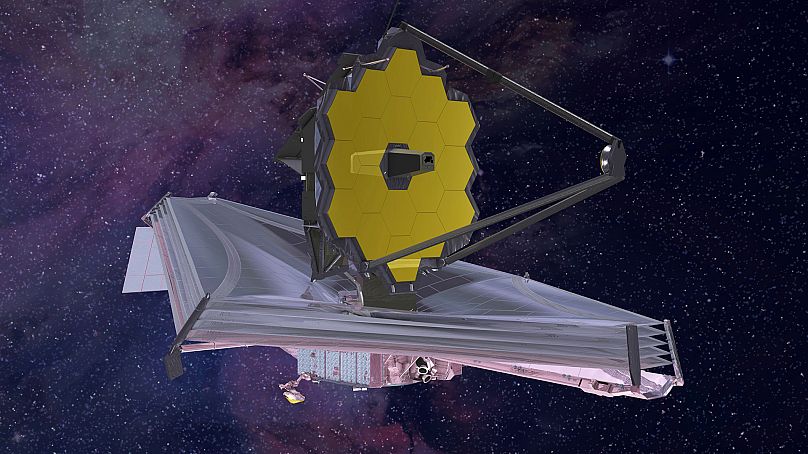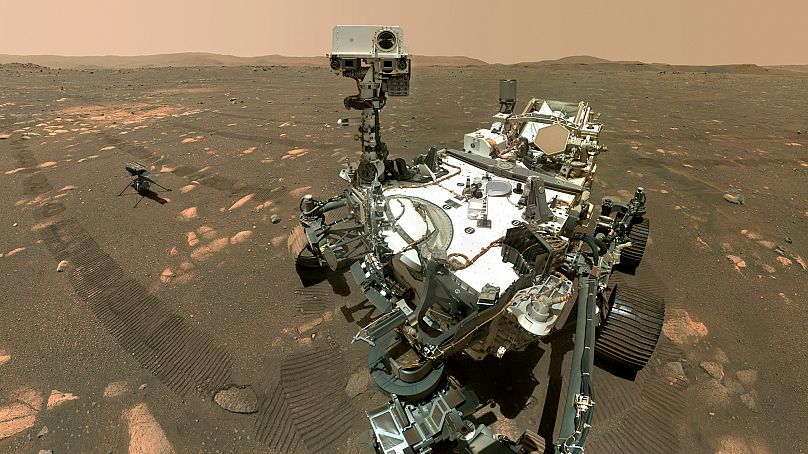Mars missions, space telescopes, extraterrestrial filmmaking: these are just a few of the out-of-this-world stories that made headlines this year.
Between three Mars missions, the James Webb Telescope Mission, a new space station, and the billionaire space tourism boom, it’s fair to say that 2021 has been a pretty extraordinary year for space travel.
This year saw the execution of more than 130 space missions, with the overwhelming majority of these being successful.
And while it will still cost a pretty penny for a civilian to get to space - three individuals paying $55million (€48.7million) to go to the International Space Station next year, for instance - space exploration is undoubtedly becoming cheaper.
This is largely thanks to private aerospace companies driving down costs by developing reusable capsules and rockets in a trend that looks set to continue into 2022.
It hasn’t all been smooth sailing, however. The flipside of more missions and spacecraft in orbit is the increased risk of so-called "space junk" - discarded launch vehicles or parts of a spacecraft that float around in space hundreds of miles above the Earth - colliding with the ISS or satellites in orbit.
There were also brief hiccups when a sizable rocket was going to make an uncontrolled reentry into Earth’s atmosphere or when Russia decided to test blowing up one of their own satellites in orbit in November.
Good, bad or ugly, as the year draws to a close, we’ve rounded up some of the biggest space stories of the year.
The James Webb Space Telescope
At time of writing, NASA, the Canadian Space Agency and the European Space Agency (ESA) are gearing up to launch their $9 billion (€7.9 billion), a space observatory 26 years in the making, on December 24.
If all goes to plan, the telescope will travel 1.5 million km from Earth where it will orbit the Sun. The James Webb has been designed to read infrared light and could tell us the most complete story ever of how the universe came to be filled with light.
3 successful Mars Missions
Incredibly, three different missions from the USA, the United Arab Emirates, and China all reached Mars in 2021.
NASA successfully deployed its Perseverance Rover which landed at the Red Planet’s Jezero crater on February 18, a strategic location that could give scientists clues to microbial life existing on Mars.
The UAE’s Hope orbiter successfully entered Mars orbit on February 9, the first of the three missions to reach the planet in 2021. The mission is planned to last two years and will study Mars’ atmosphere, analysing daily and seasonal weather cycles.
Finally, China’s maiden Mars mission, Tianwen-1, also proved successful, landing on Mars on February 10. The Chinese mission touched down at a location known as Utopia planitia, a large plain in the planet’s northern hemisphere.
First flight on another planet
The Ingenuity Helicopter caught a ride to the Red Planet attached to the underside of NASA’s Perseverance Rover. On April 19, NASA pulled off the first controlled, powered flight of an aircraft on another planet lasting 39 seconds.
In a nod to the Wright brother’s achievement of the first powered flight on earth in 1903, a small piece of fabric from that plane was tucked inside the helicopter for its trip.
Spacetourism kicks into a new gear
If terrestrial tourism endured more turbulence this year thanks to COVID-19, at least the industry experienced an upswing in outer space.
2021 saw billionaires like Jeff Bezos and RIchard Branson launched to Low-earth orbit in their respective Blue Origin and Virgin Orbit rockets.
Even erstwhile Captain Kirk, William Shatner, managed to catch a ride to space aboard Blue Origin’s New Shepherd rocket.
Billionaire Japanese entrepreneur Yusaku Maezawa, also recently touched town from his 12-day pleasure trip aboard the International Space Station.
First film made in space
Russian filmmakers Klim Shipenko and Yulia Peresild saw off stiff competition from the likes of Tom Cruise to clinch the distinction of shooting the first feature film entirely in space.
The pair spent 12 days shooting their film 'The Challenge' aboard the ISS and even roped in Russian cosmonaut Anton Shkaplerov to play a role.
The drama focuses on a doctor who is sent to the ISS to perform an emergency operation on an astronaut.
Touching the sun
In December, NASA announced that a spacecraft had successfully entered the solar corona for the very first time. The space agency announced that the Parker Solar Probe entered the Sun’s atmosphere in April 2021 but held off announcing the milestone, confirming the event took a number of months.
Getting up close and personal with the Sun’s atmosphere will help scientists obtain data on solar wind or flares, and better understand how they affect life here on Earth.
The Chinese rocket that fell to Earth (and thankfully didn’t hit anyone)
You might remember back in July a slightly hairy moment when China announced that part of a Long March rocket would make an uncontrolled re-entry into the Earth’s atmosphere, travelling at a cool 29,000 km/h.
It was one the largest objects to ever make this kind of re-entry and scientists couldn’t be 100 per cent sure of its point of impact. Thankfully, most of the rocket debris burned up on reentry, and the rest fell into the Indian Ocean. Still, the incident drew widespread criticism from the international community.
NASA’s DART mission to crash a spacecraft into an asteroid
In November, NASA launched an Armageddon-like mission to crash a spacecraft into an asteroid.
It might seem like a strange thing to do with a vessel costing millions of dollars, but the mission actually has some solid objectives, namely to figure out a way to prevent mass extinction on our planet were we to find out that an asteroid was hurtling towards us from outer space.
The Double Asteroid Redirection Test seeks to obtain data on how an asteroid might be deflected if necessary.













